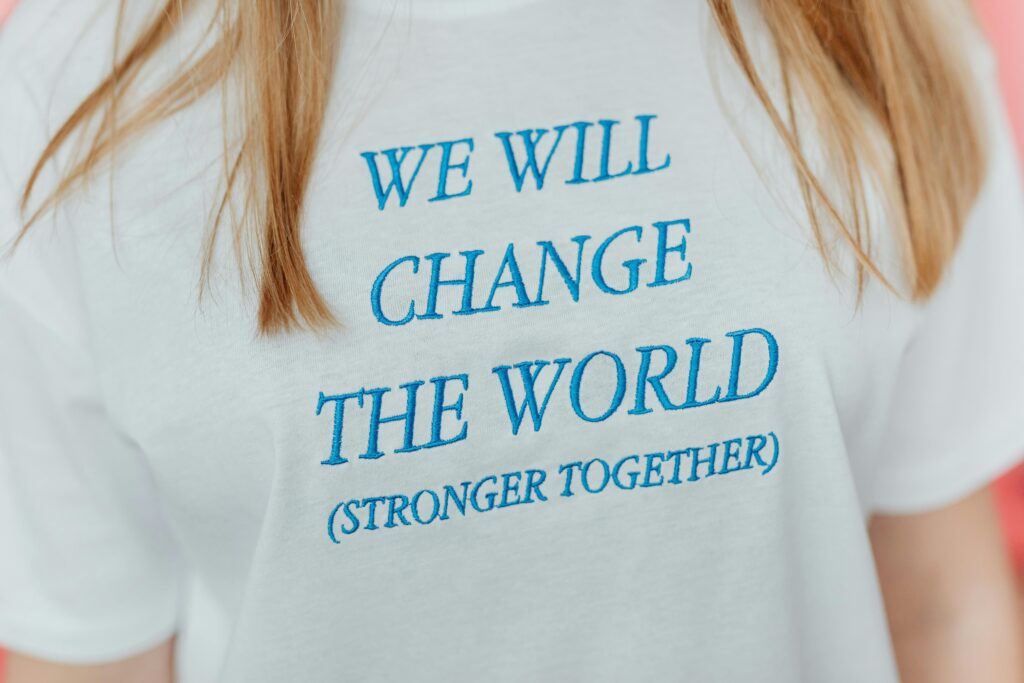Key Takeaways
- Youth leadership in climate change means young people moving beyond activism to actively shape policy, education, and community resilience.
- While 86% of youth worldwide participate in climate initiatives, only 6% have formal representation in policymaking. This highlightes a critical gap.
- Case studies like Fridays for Future and Pakistani youth advocacy efforts show how young leaders influence both local realities and global climate debates.
- Building a climate-savvy generation requires integrating climate education, empowering youth councils, funding digital advocacy, and investing in youth-led innovation.
- The challenges of limited funding, representation, and burnout remain, but with support, youth can drive the next wave of climate resilience and innovation.

Youth Leadership And Advocacy
Young people are the largest rising cohort in human history, and their age structure will drive nearly four-fifths of global population growth through mid-century. That demographic energy of youth leadership is landing in a world of overlapping crises where policy outcomes increasingly hinge on civic participation, credible information, and intergenerational trust.
Positioning youth not only as beneficiaries but as co-designers and decision-shapers is therefore a pragmatic development strategy, not just a moral stance.
Youth leadership means young people setting direction and stewarding people and resources toward a shared goal.
Youth advocacy means influencing decisions, budgets, and norms so those goals become policy or practice.
Youth Leadership In The Context Of Climate Change
When we talk about youth leadership and advocacy in climate change, we mean young people taking the lead, whether by raising awareness, pushing for greener policies, or building projects that promote sustainability. It is about the courage of young voices speaking for a future they will inherit, and their ability to turn concern into organized action.
We belong to a generation that not only understands the science but leads with it. Today’s youth aren’t just growing up in a changing climate but learning to lead in response.
A recent global survey reveals that 86% of young people (aged 15–24) have taken part in a climate initiative, such as community clean-ups or awareness campaigns, but only 6% have had a voice in national or global climate policy processes like the UN Climate Conferences (COP)
(Samie, 2023)
This gap highlights both their engagement and the barriers they face.
Real Examples
- At a community hall in Cape Town, a 13-year-old addresses a crowd, calling for an end to new coal plants.
- In Dhaka, young internet users stream live sessions urging policymakers to build cyclone-resistant embankments.
- And in Nairobi, youth biodiversity activists influence national adaptation strategies.
These are not isolated scenes, but reflections of thousands of youth leaders emerging globally, poised to steer the future of climate solutions.

Why Today’s Youth Cannot Be Left Out Of Climate Decision-Making
One of the strongest arguments for youth advocacy is simple: the future belongs to them. Climate change is projected to intensify over the coming decades, and the generation that is currently in classrooms will soon inherit the decisions made by today’s policymakers.
Excluding young voices from climate governance risks creating policies disconnected from the realities of their future. On the other hand, empowering them ensures:
- Relevance: Young advocates bring fresh insights to policy making and innovative solutions for its implementation.
- Fluency: They know how to leverage digital platforms for mass mobilization.
- Connection: From the grassroots of local communities to global movements, youth leaders are driving action from the ground up.
In short, engaging youth today is an investment in climate resilience tomorrow.
Key Areas Of Youth Climate Advocacy
1. Education and Eco-Literacy
Education is the foundation of long-term climate action. Building eco-literacy into curricula allows students to learn how human activities affect ecosystems and how communities can adapt. Strong climate education fosters informed leaders who understand science, policy, and the social dimensions of environmental challenges.
Related reading: Eco-Literacy in Education: A Free Guide
2. Digital Advocacy and Social Media Movements
The digital age has given young climate leaders unprecedented reach. Social media platforms like TikTok, Instagram, and X (formerly Twitter) amplify youth voices far beyond geographical boundaries. Greta Thunberg’s rise through online channels is the most prominent example, but not the only one. Countless grassroots campaigns led by students and young activists are gaining traction daily.
3. Policy and Grassroots Engagement
Digital advocacy often translates into real-world impact. From Fridays for Future protests to youth delegations at COP climate conferences, young leaders are entering spaces once reserved for policymakers. They are not just demanding change; they are shaping legislative agendas.
4. Gender-Inclusive Climate Advocacy
Diversity, equity, and inclusivity (DEI) are main pillars to intersectional youth advocacy. A gender-inclusive approach to climate leadership ensures that women, girls, and marginalized voices are not left out of solutions. This is critical, as climate impacts often disproportionately affect vulnerable groups.
Related reading: Why Gender-Inclusive Climate Action is Essential

Case Studies Of Youth Advocacy In Action
UN Case Study: Fridays for Future
Launched in 2018, Fridays for Future quickly transformed from a school strike in Sweden into a global climate movement. Its youth-driven model demonstrated how grassroots activism could put climate on the front page of global political discussions. Governments and institutions were forced to respond, proving the power of persistent youth advocacy.
Pakistan Local Climate Youth Leadership (LCOY)
In Pakistan, where climate vulnerability is exceptionally high, youth activism has taken root. From university students leading awareness campaigns on flood resilience to young delegates representing the country at international climate summits, Pakistani youth are bridging the gap between local realities and global discussions. Their work emphasizes that climate action must be both community-based and globally connected.
How To Build A Climate-Savvy Generation In 6 Steps?
- Climate awareness must begin in classrooms, not just as a one-time subject but as a core part of education across all levels. Schools can integrate sustainability into science, history, and even economics to show how climate affects every aspect of life. Hands-on projects such as tree planting, recycling drives, and energy audits of schools allow students to connect theory with real-world impact.
- Youth must also be given formal seats in governance structures where climate decisions are made. Too often, they are invited as observers rather than participants. Establishing youth councils at municipal, national, and even international levels ensures that the next generation has influence, not just visibility. Their fresh perspectives can strengthen policymaking by linking long-term climate risks to present-day decisions.
- Building a climate-savvy generation also means breaking down intergenerational silos. Policymakers, scientists, and businesses must actively collaborate with young leaders to co-create solutions. This way when experience, and energy plus innovation are combined, the outcomes will be more comprehensive and sustainable.
- The digital skills of today’s youth must be supported with resources. Many young activists run impactful online campaigns but lack funding and technical capacity to scale their efforts. Beyond digital activism, real progress also requires investment in youth-led innovation. Governments, NGOs, and businesses can invest in youth-led digital advocacy, providing mentorship, grants, and amplification of their initiatives so they reach audiences beyond their immediate networks.
- Finally, communities must be strengthened by enabling youth participation in local adaptation projects. From water conservation initiatives in drought-prone regions to disaster preparedness training in flood-vulnerable areas, involving young people at the community level fosters ownership, resilience, and the practical skills needed to face future climate challenges.

Challenges And The Future Of Youth Climate Leadership
While youth advocacy is powerful, it faces undeniable challenges. Funding barriers limit how far grassroots movements can scale. Representation gaps mean young activists are sometimes included symbolically rather than given real influence. Mental health pressures, from climate anxiety to activist burnout, also weigh heavily on many young leaders.
Yet the future holds opportunities. As digital natives, youth are uniquely positioned to harness technology, artificial intelligence, and renewable energy innovations for climate solutions. If adequately supported, this generation could accelerate the global transition toward sustainability.
In The End…
The coming decade will be decisive. If youth are empowered with the tools, resources, and platforms they need today, they can transform tomorrow’s climate challenges into opportunities for resilience and innovation.
The responsibility now lies with policymakers, educators, and businesses: will they empower young voices to shape a sustainable future, or leave them to inherit the cost of inaction?
FAQs (Voice Search Optimized)
How can youth influence climate policy today?
Young people can participate in local councils, join climate summits, and use digital platforms to pressure governments into adopting greener policies.
What are the best ways schools can teach students about climate change?
Integrating eco-literacy into classrooms, hands-on projects, and sustainability programs are effective ways to prepare students for climate leadership.
Which youth-led climate movements have made the most impact?
Fridays for Future, Youth Climate Strikes, and grassroots campaigns across Africa and Asia are among the most influential.
Why is youth advocacy important for solving climate change?
Because today’s youth will live with tomorrow’s climate consequences, their perspectives are vital to building relevant and long-term solutions.
How do young people use social media to fight climate change?
They use TikTok, Instagram, and X to run awareness campaigns, organize protests, and share solutions globally.





